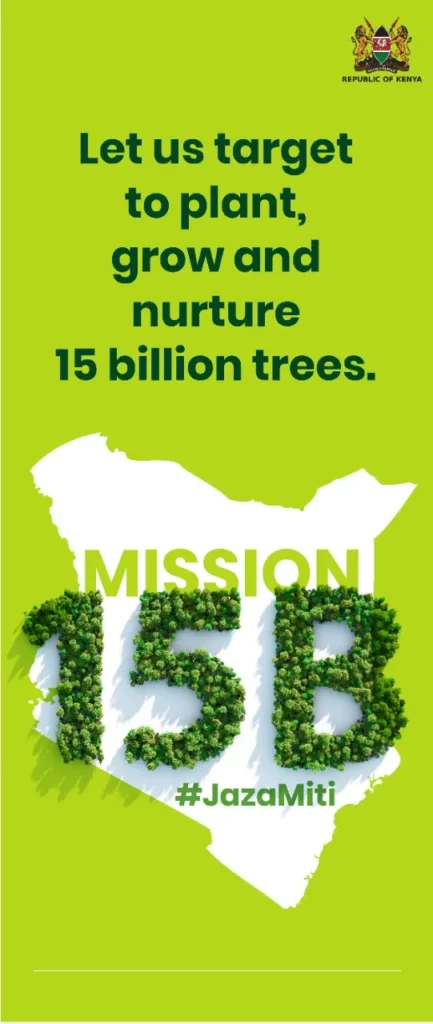International day of Forests
I am writing this on International Day of Forests, which coincidentally is the first day of the year that we are starting to see showers of rain in a while. In many parts of Kenya – and indeed the general East African region, we have experienced an extreme shortfall of rain over the past few years. This has impacted food production and caused many deaths of livestock, wildlife and even people.
A few weeks ago, I blogged my views that beyond reforestation, we need to reframe the discussion around trees and climate change to involve tree cover in general. If we want to call back the rain and claw back the effects of climate change, we need to be aggressive to grow green. Kenya faces significant environmental challenges, including deforestation, soil erosion, and climate change. The lack of tree cover in Kenya is a significant concern, as it contributes to climate change and affects the country’s economic development.
Kenya has a deforestation rate of approximately 5.6% per year, among the highest in the world. According to the United Nations, Kenya has only 7.4% of its land under forest cover, significantly lower than the recommended 10% for sustainable development. The lack of tree cover has significantly impacted Kenya’s environment, including soil erosion, loss of biodiversity, and increased greenhouse gas emissions.

What is encouraging is that the government has pushed towards growing 15 Billion trees by 2032 (1.67 Billion per year). President William S Ruto made this announcement on his 56th birthday last year. To this end, I would propose that the government incentivise all landowners to grow at least 50 trees per acre. The incentives could be a land rate holiday of some kind.
When the government recently issued a proposal to tax idle land, I voiced my support for it if we were to add an incentive you would be entitled to a tax holiday on that tax if you planted 100 trees per acre of idle land. Most of the trees that should be encouraged should be trees that produce fruit, nuts, medicine or foods of some kind, as these tend to have great wide crowns.
Abundance to call back rain
The net effect of this is that we would have an abundance of fruits, medicine and nuts for nutritional purposes. These fruits, nuts and herbal medicines, would not only serve the community by providing nutritious foods, but also, they would make their way to the markets where income would be generated by the farmers within three to five years.
The trees would replenish and strengthen the soil, by holding the soil in place with their roots, preventing the loss of valuable topsoil. This can help to maintain soil fertility and reduce the need for costly soil conservation measures. Growing a diverse range of fruit, nut, and medicinal trees can help to promote biodiversity, providing habitat for a range of animals and insects. This can help to maintain a healthy and resilient ecosystem, which is essential for long-term sustainability.
Trees can also help modify an area’s microclimate, creating more humid conditions that can increase the likelihood of rainfall. The shade provided by trees can also help to reduce evaporation rates, which can help preserve soil moisture and increase water availability for plant growth.
100-acre forest
Someone recently educated me that it would take about 100 acres of woodlands or forest to modify an area’s microclimate enough to call back the rain. I learnt that each acre would contain 350 to 500 trees – meaning that we are talking about at least 35,000 to 50,000 trees. I have resolved to try plant and grow 100 acres of trees in northern Malindi in an area that used to be woodlands until people cut down the trees for charcoal. My goal is to consistently grow a diverse variety of trees that do well in this area including, fruit trees (e.g. Mango), medicinal trees like Moringa and the Neem tree which grow wild here, wood trees like the casuarina and pine trees and nut trees like the cashew nut tree. I aim to also dedicate at least 10% of the land on indeginous trees like the great Mugumo (fig) tree.
For me, this would be my way to contribute at a personal level to the fight against climate change. I recognise however that this fight cannot be won alone. I intend to work with my neighbours, many of them smallholder farmers to encourage them to plant and grow at least 50 trees per acre. I am also going to actively support an initiative by a young teacher in Malindi called Elphic, who is mobilising the communities in Kilifi to grow micro forests in all schools in Kilifi. Every tree counts.
PARTICIPATE


